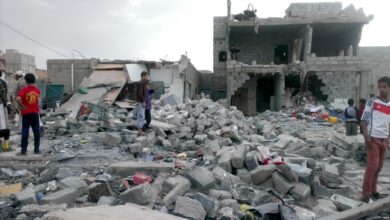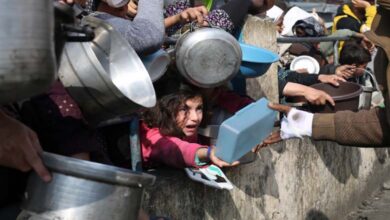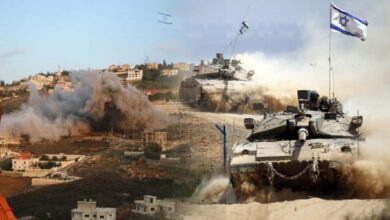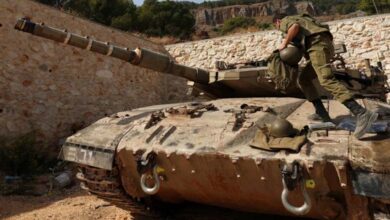What Weapons Will Hezbollah Use in an Open War with Israel?
The military escalation, which could quickly slip into a more violent war between Hezbollah and Israel, raises questions about the actual weapons the Shiite group possesses when facing a regular army armed with a sophisticated arsenal of various weapons and missiles.

The Lebanese Hezbollah group relies on a large arsenal of weapons in the cross-border fighting with Israel, which has been ongoing for more than 10 months. The group, one of the most heavily armed non-governmental organizations in the world, says it has used only a small portion of its arsenal so far.
-
Washington Post reveals how Lebanese pay the price for Iranian threats and ongoing Hezbollah-Israel clashes
-
Hezbollah Bets on Tunnel Warfare in Confrontation with Israel
With the party launching its largest attack on Israel at dawn on Sunday in retaliation for the killing of one of its key leaders, and as the Israeli army is expected to launch the most violent attacks on southern Lebanon, the discussion about the weapons held by the Lebanese Shiite group and its readiness for a prolonged and violent confrontation returns to the fore. This confrontation could eventually escalate into a full-scale regional war if Iran also responds to the assassination of Ismail Haniyeh on its soil, and if the Houthis and Iraqi militias mobilize on another front.
The group, backed by Iran, has up to 150,000 missiles and shells, according to the CIA World Factbook.
-
Can Israel Deter Hezbollah? Dark Scenarios for a Potential Confrontation
-
New U.S. Sanctions Targeting Yemeni Houthis and Lebanese Hezbollah
Hezbollah claims to have missiles capable of hitting all areas of Israel. Many of these missiles are unguided, but the group also has drones, anti-tank, anti-aircraft, anti-ship missiles, and precision-guided munitions.
Iran is Hezbollah‘s main supporter and primary arms supplier. Much of the group’s arsenal consists of Iranian, Russian, or Chinese models.
-
12 Hours of Chaos in Israel “Saved” Hezbollah from a Potential Strike
-
Israel avoids total war in response to Hezbollah
In 2021, Hezbollah Secretary-General Hassan Nasrallah said the group had 100,000 fighters. The World Factbook estimates that in 2022, the number of fighters reached 45,000, with 20,000 of them being full-time fighters.
Ground Attack Missiles and Shells
Unguided rockets formed the majority of Hezbollah‘s missile arsenal during its 2006 war with Israel, when around 4,000 rockets were fired at Israel, mostly Katyushas with a range of 30 kilometers.
-
Hezbollah Focuses on Targeting Israeli Gas Fields
-
Hezbollah Conceals Its Losses with Promotional Displays of the ‘Hudhud’ Drone
Nasrallah stated that the biggest change in the group’s arsenal since 2006 is the expansion of its precision-guided systems, and that Hezbollah has the capability to equip missiles with guidance systems within Lebanon.
Hezbollah possesses Iranian types, such as Raad, Fajr, and Zilzal missiles, which have stronger payloads and longer ranges than the Katyusha rockets.
-
Know Hezbollah’s “Primitive” Tactics in Confronting Israeli Technology
-
Violent Clashes Between Hezbollah and Israel Amid Preparations for Total War in Southern Lebanon
The missiles Hezbollah fired at Israel during the Gaza war since October included Katyusha and Burkan rockets with explosive payloads ranging from 300 to 500 kilograms.
In June, the group used for the first time Iranian-made Falaq 2 missiles, which can carry a larger warhead than the previously used Falaq 1 missiles.
-
Israel and Hezbollah: Is Confrontation Inevitable?
-
Leaks from the Secret Meeting: Iran Refuses to Support Hezbollah and its Iraqi Militias Against Israel
Anti-Tank Missiles
The group used guided anti-tank missiles extensively during the 2006 war and has redeployed guided missiles, including Russian-made Kornet missiles.
A report by the pro-Iranian Al-Mayadeen channel stated that Hezbollah also used an Iranian-made guided missile known as Almas.
-
Assassinated in a Night Raid on Southern Lebanon: Who is the Senior Hezbollah Military Leader Taleb Abdullah?
-
Dangerous Escalation: Hezbollah Targets Israeli Fighter Jets for the First Time Since the War Began
A report from Israel’s Alma Research and Education Center described the Almas missile as capable of hitting targets beyond line-of-sight, following an arced trajectory that enables it to strike from above.
The report added that this missile is part of a family of weapons developed by Iran through reverse engineering, based on Israel’s Spike missile family.
Anti-Aircraft Missiles
Hezbollah has shot down several Israeli drones during this conflict using surface-to-air missiles, including Hermes 450 and Hermes 900 drones.
Although Hezbollah had long been suspected of having anti-aircraft missiles, this is the first time the group has used these weapons.
In another first, Hezbollah claimed to have fired at Israeli warplanes, forcing them to leave Lebanese airspace, without specifying the type of weapon used. No planes were hit.
-
Forest Fires in Israel: What is Hezbollah’s Involvement and What are the Consequences?
-
Is Hezbollah Planning to Return to Syria and Why?
Drones
Hezbollah has launched several kamikaze drone attacks and has claimed to use drones that drop bombs and return to Lebanon.
The group has used drones in some of its attacks to distract Israeli air defenses while other drones reached their targets.
Hezbollah‘s arsenal includes locally assembled drones like the Ayoub and Mirsad models. Analysts believe these drones can be produced at a low cost and in large quantities.
-
Secretive: Is Iran Training Hezbollah in Qom, Iran and Why?
-
Hezbollah Strikes Golan Brigade Headquarters with Large Rocket Barrage
Anti-Ship Missiles
Hezbollah first proved it had anti-ship missiles in 2006 when it struck an Israeli warship 16 kilometers off the coast, killing four Israelis and damaging the vessel.
Sources familiar with Hezbollah‘s arsenal say the group has obtained Russian Yakhont anti-ship missiles since the 2006 war, with a range of 300 kilometers. Hezbollah has never confirmed possessing this weapon.












